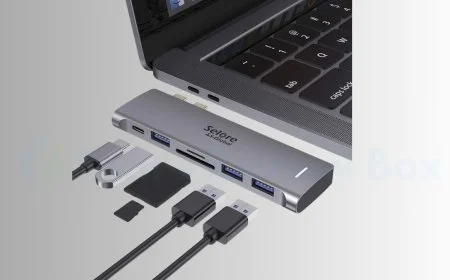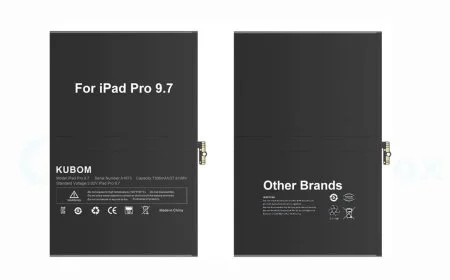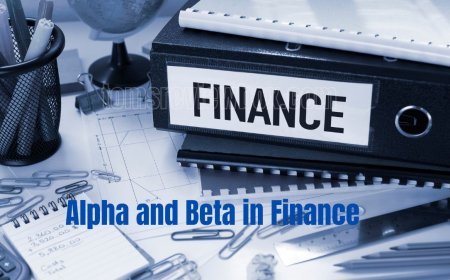How to Finance Your Home Renovation Project?
Discover effective strategies on how to finance home renovation projects, ensuring your dream upgrades are within reach.
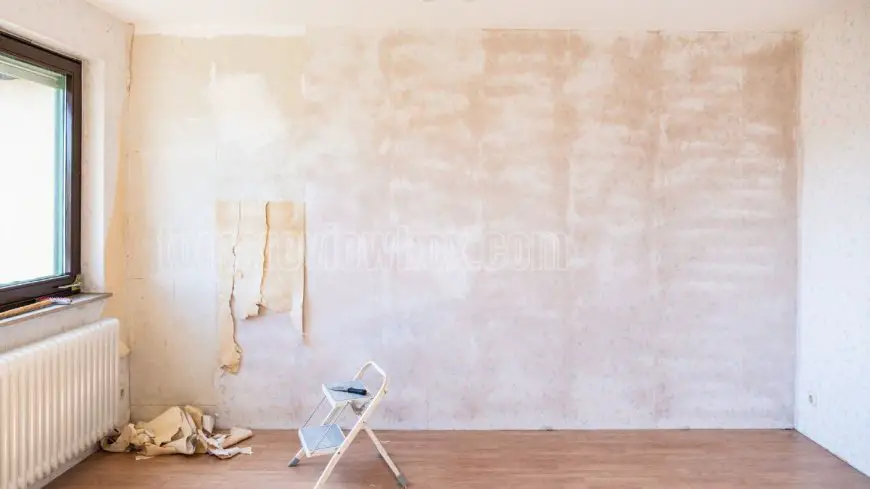
Key Takeaways
- Home renovation financing offers a full spectrum of loans. These financing options allow homeowners to budget for smaller and larger improvements, without sacrificing their savings.
- Zero interest loans provide a great long-term financing vehicle. You need to pay them off on time during the promo period to avert interest charges.
- Government loans, like FHA 203(k) loans, provide attractive terms and lower interest rates. These features make them ideally suited for more complex, larger scale renovation activities.
- To avoid using home equity, personal loans and credit cards can provide a solution for funding renovations. Always compare the interest rates and repayment terms before choosing a loan.
- Alternatives such as savings, grants, or crowdfunding can supplement or replace debt and allow for home renovations. When saving, always keep an emergency fund.
- Comparing interest rates, loan terms, and working with a financial advisor can guide you in choosing the best financing option for your needs.
To finance a home renovation, look into personal loans, home equity loans, or savings you’ve earmarked. Personal loans are a good option for smaller projects, providing fast access to cash without putting your home at risk. Home equity loans and lines of credit are ideal for tackling bigger renovations.
HELOCs and home equity loans let you borrow against your home’s value with the benefit of lower interest rates. Not to mention, saving up in advance removes the need for a loan altogether, along with those associated costs.
Picking the right financing option will be based on how big your project is and what you want to achieve financially. For instance, renovating a kitchen could involve a different renovation strategy than building an addition.
As with any home renovation, budget accordingly and account for potential cost overruns. With a little upfront research, the process can be much easier to navigate and more manageable.
Understanding Home Renovation Financing
Home renovation financing is the act of getting money to use for home improvement projects. Are you remodeling your kitchen, replacing your roof, or building a new room? Financing is what will make those plans come to life without draining your bank account.
These financial tools are intended to help homeowners find manageable costs whether they’re making a small update or going through a large-scale renovation. Through proper renovation financing, you can make sure projects run more smoothly by having funds available upfront to cover costs.
What is home renovation financing
At NEF, home renovation financing provides customized loan solutions specifically for remodeling, repairing or improving your home. These loans cover everything from basic cosmetic improvements, like painting, to structural renovations, like adding an addition.
By leveraging these funding opportunities, homeowners can stretch their dollars further and do more work—all while preserving their hard-earned savings. How to pay for a new kitchen with home equity loans or personal loans. Unique government loans can support your investments in energy-efficient solutions.
Why financing is important for renovations
Home renovation financing allows homeowners to invest in their homes and communities without draining personal savings. Since renovations typically add value to the home, this makes it a great investment.
Having a loan specifically for renovation purposes means you won’t need to put large, unexpected expenses on your credit cards, which often come with much higher interest rates. A thoughtful loan prevents you from taking on too much—keeping total monthly debt payments under 36% of your income—putting you at greater financial risk.
Common types of home renovation loans
|
Loan Type |
Interest Rates |
Key Features |
|---|---|---|
|
Home Equity Loan |
4%-7% |
Uses home as collateral; repayment over 5-15 years |
|
Personal Loan |
8%-15% |
No collateral; higher rates; origination fees may apply |
|
Government Loan |
Varies |
FHA 203k or HomeStyle for combined mortgage and remodel |
Every loan comes with its own distinct advantages. Home equity loans, for instance, work well for large projects but can take several months to approve.
Personal loans offer faster access, but at a greater expense. Government loans bundle the renovation and mortgage together, making for one convenient payment, but these can delay winning bids on desirable homes.
Zero Interest Home Improvement Loans
Zero interest home improvement loans provide a very real solution to financing renovations without the additional burden of interest. These loans sometimes come with promotional periods, during which borrowers need only worry about paying back the principal. This affordable financing option allows you to save thousands of dollars in interest for short-term projects such as redoing a kitchen or repairing storm damage.
It’s a better deal than other loans.
How zero interest loans work
These loans work on simple terms. Borrowers agree to pay back all of the principal. They tend to do this within a political lifetime that ranges from six months to five years.
Failure to meet this deadline, though, could result in an increase in accrued interest or penalties. Because payment schedules are typically set in stone, this type of loan makes budgeting very easy.
It’s typical for lenders to bury small administrative fees, so always read the fine print so you don’t end up with invisible surprises. For example, if a homeowner were to repay a $10,000 loan in less than two years, they would save more than $3,000 in interest versus typical financing.
Where to find zero interest loans
Local banks and credit unions will frequently offer these zero interest loan options, particularly through state-sponsored housing finance programs. Home improvement retailers such as Lowe’s or Home Depot sometimes provide their own financing options to finance in-store purchases.
Online lenders and non-profits help homeowners through community-focused loans that keep property values up and advance local development goals.
Pros and cons of zero interest loans
Pros:
- No interest charges
- Fixed payments for easy planning
- Quick funding availability
Cons:
- Limited time to repay
- Potential administrative fees
- Strict eligibility criteria
Government Loans for Remodeling Home
Government loans provide a versatile and easily obtainable funding source for homeowners considering home renovations. These home improvement loans are supported by federal programs specifically designed to make home improvements more affordable. With lower interest rates and flexible repayment terms, these loan options become invaluable tools. Their expertise can significantly impact the success of your home renovation project.
Types of Government Renovation Loans
There are a number of government loans designed for the varying needs of homeowners, including a home renovation loan option that stands out. Among these options, the FHA 203(k) loan is a clear favorite among homebuyers because it allows you to finance both the purchase and the renovation of a home in one cohesive loan. This makes it perfect for extensive remodeling or renovations, such as replacing all the old plumbing or wiring, or modernizing a historic property.
VA renovation loans specifically help service members, providing a unique home improvement loan for veterans and active-duty military members. These loans not only enhance home accessibility but also promote energy efficiency. Additionally, USDA loans offer essential funding for low-income rural homeowners needing to make critical home repairs and improvements.
These loans aim to improve the safety and quality of rural housing, with most having specific eligibility requirements based on geographic location, the type of renovation being completed, and the personal financial situation of the homeowner.
Eligibility Requirements for Government Loans
In order to qualify, you’ll have to fulfill a number of requirements. Most of these programs have a minimum credit score requirement of at least 580 (this varies based on the program). Documentation of a reliable income source, proof of home ownership, and in many cases, compliance with geographic area limits are key.
For example, USDA loans can only be used in designated rural areas, whereas FHA loans can be used anywhere in the country. Be detail-oriented—have pay stubs, tax returns, and property information ready to make your application as smooth as possible. If you meet these requirements, you will have a much smoother process and better approval odds.
Benefits of Using Government Loans
Government loans come with a few advantages that make them excellent options for home remodeling. This is because their interest rates are usually lower than private loans, saving you more money in the long run. Repayment terms can be more flexible, providing you with more control over monthly payment amounts.
These loans fund substantial renovation projects that would otherwise be financially unattainable without personal savings. Perhaps the second most important benefit is borrower protection. Government-backed programs often include extra protections against predatory or otherwise unfair lending practices, allowing you to have confidence every step of the way.
Financing Home Renovation Without Equity
We know figuring out how to finance a home renovation project without tapping into your home equity options can feel daunting. Many different home improvement loan options exist to suit your unique circumstances. So whether you’re considering a minor home improvement or a major renovation, knowing every alternative financing method will allow you to choose wisely. Below, we dig into some promising practical finance solutions.
1. Use personal loans for renovations
Personal loans offer you fast access to cash. You can borrow as little as $1,000 and as much as $50,000, with repayment terms from a few months to several years. They are unsecured, so you don’t have to put up collateral. This, in turn, makes them ideal for homeowners looking to preserve their home.
For example, Upgrade does specifically focus on borrowers with fair credit, and its features include prequalification, next-day funding, and flexible repayment terms. Setting up autopay can reduce interest rates by up to 0.25%. This ease of use makes personal loans a simple solution for funding home renovations such as kitchen remodels or bathroom upgrades.
2. Explore credit card financing options
For smaller projects, credit cards offer unmatched convenience. Selecting cards with promotional 0% APR offers are a smart move. It can help you save on interest, provided you pay down the entire balance before the promotional period ends.
When you factor in high interest rates on unpaid balances, that can create expensive debt in the long run. Credit cards are a good option for small projects such as purchasing appliances or new lighting fixtures.
3. Consider cash-out refinancing alternatives
Cash-out refinancing is another way to access your home equity. This option gives homeowners cash to make renovations without requiring an additional loan. This alternative is best for larger projects, like putting in a new addition or replacing whole house HVAC systems.
Before you go down this path, though, check today’s mortgage rates to make sure you’re getting the best deal possible. RenoFi, for instance, offers homeowners the ability to borrow much larger sums than conventional lenders. It’s perfect for big home renovations.
4. Look into contractor financing programs
These contractors often partner with financial institutions to provide financing directly, whether through personal loans or specialized home improvement loans. These programs usually have low- or no-interest loans or advance payment options, with flexible repayment terms based on the homeowner’s budget.
For instance, a contractor may offer a low-interest financing option for home energy upgrades such as installing energy-efficient windows or a new roof. This alternative removes the need to go outside the community to access credit, making the whole process more efficient and keeping everything within one contract.
Funding Renovations When Buying a Home
When purchasing a home that requires substantial work, funding those renovations becomes nearly as critical as acquiring the mortgage in the first place. The reality is renovation costs can double in an instant. It’s important to explore available financing mechanisms that help buyers cover initial purchase and renovation costs.
Thinking ahead makes it easier to go from purchase to renovation, without the potential for a sudden financial burden.
Renovation loan options for new buyers
There are multiple loan options available that are tailored to homebuyers who plan to renovate. FHA 203(k) loans are a great option for buyers. They allow you to roll the cost of buying a home and making necessary renovations into one loan.
HomeStyle loans have the advantage of a single payment, so no juggling two loans. Buyers with imperfect credit histories can take advantage of these loans. For FHA 203(k) loans, you can get approved even with a FICO score as low as 500, and for HomeStyle loans, as low as 620.
Another option, RenoFi Loans, lets you borrow more than $1 million with flexible repayment terms. In addition to cutting administrative burden, these kinds of bundled loans save borrowers thousands in closing costs and time to close.
Bundling renovation costs with a mortgage
It’s the most straightforward solution for bundling renovation costs with your mortgage and keeping everything financial in one tidy place. This approach makes repayment easier, since buyers only have to handle one monthly payment rather than several different loans at once.
You’ll save on your total borrowing expenses. Saving on the higher interest rates of personal loans, which average 8-15%, is significant. HomeStyle loans and FHA 203(k) loans let you fold renovation costs into your mortgage payments.
This combination creates a distinct value proposition that makes them a powerful solution for cost-conscious homeowners. Working with lenders experienced in renovation mortgages will help ease the processing and offer targeted guidance.
Renovation timelines
Renovations are a significant home improvement project, and timing can be crucial. Most home renovation loans require the renovations to be completed within 180 days of the mortgage note date.
Tips for managing renovation costs during purchase
- Have a specific renovation budget in mind. Understanding your budgetary constraints up front prevents costly overages later on.
- Make the necessary improvements the priority. Target structural repairs or major systems such as plumbing and electrical.
- Save receipts for all renovations. Maintaining very specific documentation will keep you on budget and help you prevent any unforeseen expenses from occurring.
Alternative Ways to Pay for Renovations
Planning your dream home renovation can be thrilling, but figuring out how to pay for it is a completely different story. Though loans are the most common option, there are other creative ways to pay for your renovation that will spare you the additional anxiety of debt. Look into other options such as savings, crowdfunding, or grants.
These alternatives can provide creative, flexible solutions, particularly when inflation and escalating costs are jacking up the price of everything. Let’s take a look at these options and how they might be a fit for you.
Using savings to fund renovations
Using your savings may be the most straightforward method to pay for home improvements. This method removes the need to pay interest payments and origination fees. It further sidesteps loan processing disappointments often associated with personal loans or niche financing like FHA 203k loans.
We must be careful to find the right equilibrium. Ensure your emergency fund is well-stocked for other unexpected costs. This includes helping pay steep insurance deductibles that go from $1,500 to $5,000. For less extensive updates, cash might be the easiest, least anxiety-inducing option.
Crowdfunding or borrowing from family
Crowdfunding, a more community-focused financing method, has taken off in recent years. Platforms such as GoFundMe let your friends and family unite to help you raise money, making your dream renovation a group effort.
Otherwise, direct borrowing from family and friends is useful. Again, transparency is critical. Work up a plan for repayment in advance to prevent any confusion over obligations. This option is only successful when both sides can agree to specific terms, which is key to making sure goodwill is preserved.
Exploring grants or assistance programs
Grants or other assistance programs can be a total game-changer, making renovations far more affordable with greatly reduced out-of-pocket costs. Through the U.S. Department of Housing and Urban Development (HUD), the federal government provides programs targeted to special needs.
For one, they encourage energy efficient renovations. Sometimes, eligibility might be based on income or the type of project, so doing your research is key. It can be a lengthy process to apply, but the savings you can receive make the application process worth it.
Tips for Choosing the Right Financing Option
Planning an approach to financing a home renovation project can be tricky. Your choice of a home improvement loan affects your short-term budget and long-term financial health, so it’s important to take the time to choose the best loan option. To select the ideal option for your needs, think about these factors.
Compare interest rates and terms
When comparing financing options, focus on key factors to determine the most cost-effective choice:
- Interest rates and APR, which directly affect loan affordability.
- Loan terms and repayment schedules, since longer terms can reduce monthly payments while increasing total interest costs.
- Fees and closing costs are another opportunity for increasing your total loan costs. This does not include application and origination fees to name a few.
A home equity loan typically comes with fixed interest rates. If your existing mortgage interest rate is high, a cash-out refinance can offer you lower rates.
Assess your financial situation and budget
Before committing to a loan, take stock of your financial health. Start by creating a detailed renovation budget, accounting for labor, materials, and permits.
Include a 10%–20% contingency buffer to cover unexpected expenses. Factor in ongoing costs like maintenance or utility changes post-renovation.
Look at your debt-to-income ratio, keeping your total monthly payments under 36% of your gross monthly income. For smaller projects, look into a credit card with 0% APR offer. This flexible option is a great way to avoid longer-term debt.
Consult with a financial advisor
A good financial advisor will help you gain a better understanding of your potential financing options. They’ll help you weigh the benefits of home equity loans, HUD Title I loans, or other solutions tailored to your needs.
Advisors explain the longer-term impact, helping you select a loan you can afford with ease for the long haul.
Conclusion
The prospect of renovating a home can seem overwhelming. While this can seem daunting, it presents a unique chance to design a home that is truly tailored to how you live. Determining how you’ll pay for it shouldn’t be the most intimidating part of the process. You have some awesome choices out there. You can go with interest-free loans, or think outside the box with personal savings and credit cards. The trick is to find the best match for your needs and funding priorities.
So take the time to figure out what will work best for you. Whether you’re renovating a kitchen or a whole home, savvy financing can turn your dreams into a reality. So plan here and now and bring those changes to life. Your dream home is more within reach than you could ever imagine!
Frequently Asked Questions
What are the best ways to finance a home renovation?
If you have significant home equity available, a home equity loan or home equity line of credit (HELOC) can be a great loan option. Choose the one that aligns best with your financial situation and home renovation goals.
Can I get a zero-interest loan for home improvement?
Yes, there are some lenders and local programs that provide zero-interest loans for renovation projects. These are typically only offered for energy-saving improvements or urgent repairs. Look at your local eligibility requirements.
How can I fund home renovations if I don’t have equity?
If you don’t have any equity to tap into for your home renovation projects, consider personal loans, credit cards, or contractor financing. Other government programs also provide unsecured home improvement loans for renovation, which don’t depend on the value of your home.
Are there government programs for home renovation financing?
Of course, there are various financing options available for home renovation projects, such as FHA 203(k) loans or USDA home repair loans. Unlike the standard 30-year mortgage, these home improvement loan options target niche markets, including first-time buyers or rural homeowners. Visit your local housing authority to check your eligibility.
Can I finance home renovations when buying a house?
Home buying made easy with renovation loans! With products such as the FHA 203(k) or Fannie Mae’s HomeStyle loan, you can combine the purchase price and renovation expenses into one mortgage. This makes financing easy.
What are alternative ways to pay for home renovations?
Other possibilities include cash savings, crowdfunding, or borrowing from friends and family. Many homeowners combine energy-efficient grants or rebates with a home renovation loan to lower their overall project costs.
How do I choose the right financing option for my renovation?
Check all interest rates, fees, and repayment terms associated with your home renovation loan. Determine what you can afford and want to achieve in your home improvement project. If you’re unsure, consult a trusted financial advisor or loan officer to help you find the best loan option for your specific needs.
What's Your Reaction?










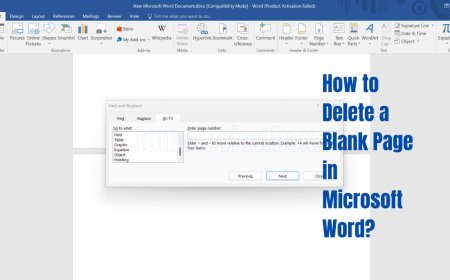
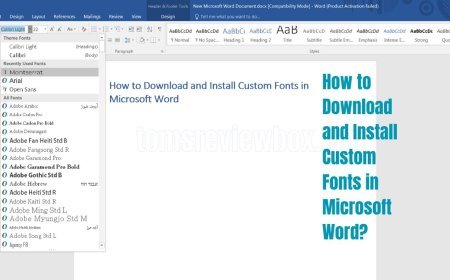












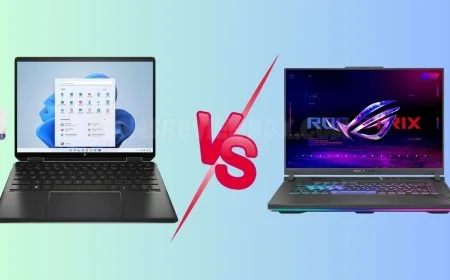








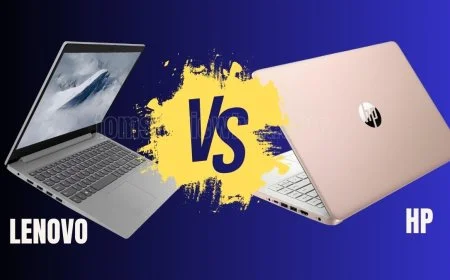
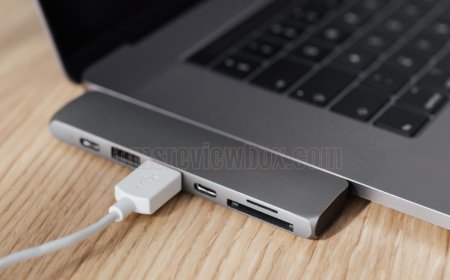




![MacBook Pro M5: All the features and specs you need to know [LEAKS REVEALED]](https://tomsreviewbox.com/uploads/images/202502/image_430x256_67bd6d7cd7562.jpg)
